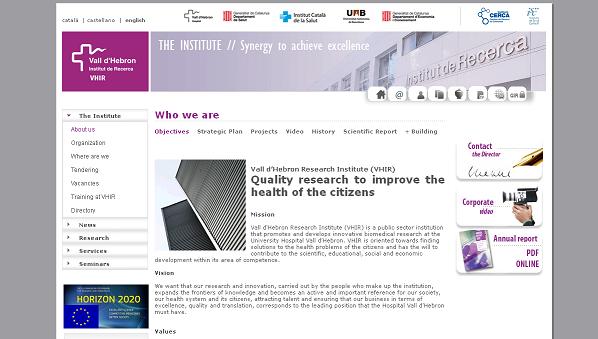Feather pillows can cause a chronic and eventually fatal breath shortness disease according to a Catalan study
Researchers of Barcelona-based Vall d’Hebron Hospital and Research Institute discovered some of the main causes of the Idiopathic Pulmonary Fibrosis, which were unknown before today. Vall d’Hebron’s study showed that a continuous exposure to feather pillows and duvets was one of the main causes of this illness as it favours the scarring of lung tissue. This disease provokes a progressive decline of lung function and leads to asphyxia because of the deterioration of the organ’s tissue. The study has been able to trace the diseases’ causes in half of the studied cases. Besides feather pillows and duvets, the persistent exposure to fungus and close contact with birds can also trigger the illness. The Catalan research allows for a new approach to the illness’ prevention and its diagnosis in the early stages. It also represents a completely new approach to this pathology in terms of treatment.

Barcelona (ACN).- Researchers of Barcelona-based Vall d’Hebron Hospital and Research Institute (VHIR) discovered some of the main causes of the Idiopathic Pulmonary Fibrosis, which were unknown before today. The Catalan study showed that a continuous exposure to feather pillows and duvets was one of the main causes behind this illness since it favours the scarring of the lung tissue. This disease provokes a progressive decline of lung function because of the deterioration of the organ’s tissue and leads to gradual asphyxia. The research has been able to trace the diseases’ causes in half of the studied cases. Besides feather pillows and duvets, the persistent exposure to minimum amounts of fungus and close contact with birds can also trigger the disease. The Catalan research allows for a new approach to the illness’ prevention and its diagnosis in the early stages. It also represents a completely new approach to this pathology in terms of treatment. This disease was discovered in 1940 but its origins were still unknown to this day. The study has been published in the prestigious academic journal The Lancet Respiratory Medicine.
Researchers from the Vall d’Hebron University Hospital and the pneumology group of the Vall d’Hebron Research Institute (VHIR) have proved that the causes of the Idiopathic Pulmonary Fibrosis can be traced in half the cases. The clinical study included an exhaustive and systematised interview with each participant as well as a determination of anti-bodies for potential causing substances. Researchers also carried out inhalation tests, micro-organism culture and environmental measurements in the patient’s living areas (home and work-place) to detect the presence of antigens causing the illness.
The Catalan study took place between 2004 and 2011 with 60 patients suffering from Idiophatic Pulmonary Fibrosis. It has now been published in the journal The Lancet Respiratory Medicine. According to the searchers, the study “opens a new way to diagnose and treat” this disease, as “the identification of the causes enables its prevention and consequently, its evolution to more advanced or severe stages can be avoided”.
Researchers have discovered that one of the main causes for the Idiophatic Pulmonary Fibrosis is the exposure to feather pillows and duvets. Two other causes are the exposure to birds and to fungus at minimal quantities but persistent in time.
According to the researchers, the study radically changes the approach towards the disease. From now on, in order to identify the causes of the disease, the pneumologist will have to undertake a very precise and targeted clinical interview, which can include visits to the patient’s home or work place in order to try to discover potential antigen sources. During those visits to the patients s homes, doctors will even measure the presence of such antigens in the air (on many occasions fungus, feather particles, etc). The suspicious material will then be analysed in order to track down the presence of any IgG antigens and a fungus culture will also be carried out.
In order to diagnose this pathology in time, Dr. Ferran Morell – the study’s main author – explained that “for the patient’s diagnosis, it is essential to set up the techniques to detect anti-bodies in front of causing substances and inhalation tests (broncoprovocation)”.
After developing the immunological tests, a broncofibroscopy along with a study of the secretions and even a criobiopsy will be undertaken. Carrying out a chirurgical biopsy will be less frequent to extract a sample of lung tissue and check it out looking for the specific alterations of this pathology. Finally the patient will go through an inhalation test of the suspicious antigen responsible for causing a pneumonitis for chronic hypersensitivity.
A severe disease with a low survival rate
The Idiopathic Pulmonary Diseases, resulting in the two lungs progressively scarring themselves (fibrosis), is a recognised disease since 1940. Lungs lose elasticity, which makes inhalation more difficult and the patient gradually loses his or her breathing capacity. In Catalonia, out of a population of 7.5 million people, 2,000 people suffer from this disease. It affects between 10 and 20 people every 100,000 inhabitants per year. In the last few years, several anti-fibrosis drugs have been tested with the objective to significantly increase the patient survival rate, which is currently of a few years only. Another possible treatment is the lung transplant but only for some patients (depending on whether they meet the criteria for tolerating such a procedure or not). The first successful lung transplant in Spain was carried out at Barcelona’s Vall d’Hebron Hospital on a 18-year old woman suffering from this pathology and who had been taking care of a small parrot.